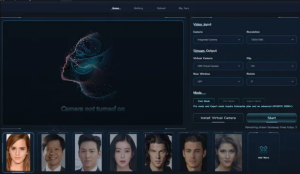Evaluating the Security and Privacy Concerns of Face Swap Technology
In the digital age, technologies that manipulate images and videos, like face swap ai, have become increasingly popular for their entertainment value and practical applications. However, as with any technology handling personal data, concerns about safety, security, and privacy are paramount. This article dives into the potential risks and safeguards associated with using face swap AI.
Understanding Face Swap AI
Face swap AI uses sophisticated algorithms to detect and modify human faces in images or videos. While this technology can be fun and has legitimate uses in film and advertising, it raises significant privacy concerns. The technology's ability to create convincing videos can lead to misuse, such as creating false representations of individuals without their consent.
Privacy Risks and Data Security
Handling of Personal Images
A primary concern with face swap AI is how it handles and stores personal images. Users must typically upload photos to a server where the face-swapping process occurs. Without stringent data security measures, these images could be susceptible to unauthorized access or leaks. According to a 2021 cybersecurity report, over 30% of image-processing apps had at least one major security vulnerability that could lead to data breaches.
Consent and Misuse
The ease of creating realistic face swaps can lead to their use in creating misleading or harmful content. There have been instances where such technology has been used to produce fake videos of public figures or to cyberbully individuals by placing their faces in inappropriate or embarrassing contexts. This misuse not only raises ethical questions but also legal concerns regarding consent and image rights.
Legal Protections and User Control
Regulatory Framework and Compliance
In response to these issues, several jurisdictions have begun implementing stricter regulations that govern the use of biometric data, including face images. For instance, the European Union's GDPR (General Data Protection Regulation) requires explicit consent for processing biometric data and mandates that users have significant control over their data, including the right to have it deleted.

Transparency and Control Mechanisms
Reputable face swap AI services often provide clear privacy policies that outline how user data is collected, used, and protected. They also offer users control over their data, such as options to opt-out of data collection or delete their information entirely. These measures are crucial for mitigating risks and ensuring user trust.
Safeguards Against Misuse
Technological and Ethical Safeguards
Developers of face swap AI can implement safeguards to prevent misuse, such as watermarking swapped images to indicate that they are altered or designing the system to detect and block the creation of harmful content. Furthermore, ongoing development in AI ethics seeks to establish guidelines that ensure the responsible use of face-swapping technology.
face swap ai: Balancing Innovation with Responsibility
The safe use of face swap ai hinges on a delicate balance between leveraging innovative technology and addressing valid security and ethical concerns. By implementing robust data protection measures, ensuring regulatory compliance, and fostering responsible usage norms, developers and users of face swap AI can mitigate risks while enjoying the benefits of this fascinating technology.
Conclusion: Navigating the Complex Landscape of Face Swap AI
In conclusion, while face swap AI offers significant potential for creativity and innovation, it also poses challenges that require careful consideration of privacy, security, and ethical implications. As the technology evolves, so too must the strategies for safeguarding users and preventing misuse, ensuring that face swap AI remains both an exciting and safe addition to our digital toolkit.
